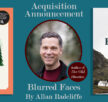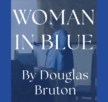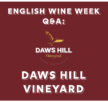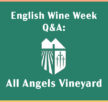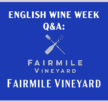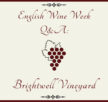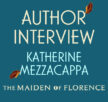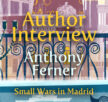Mad Scientists
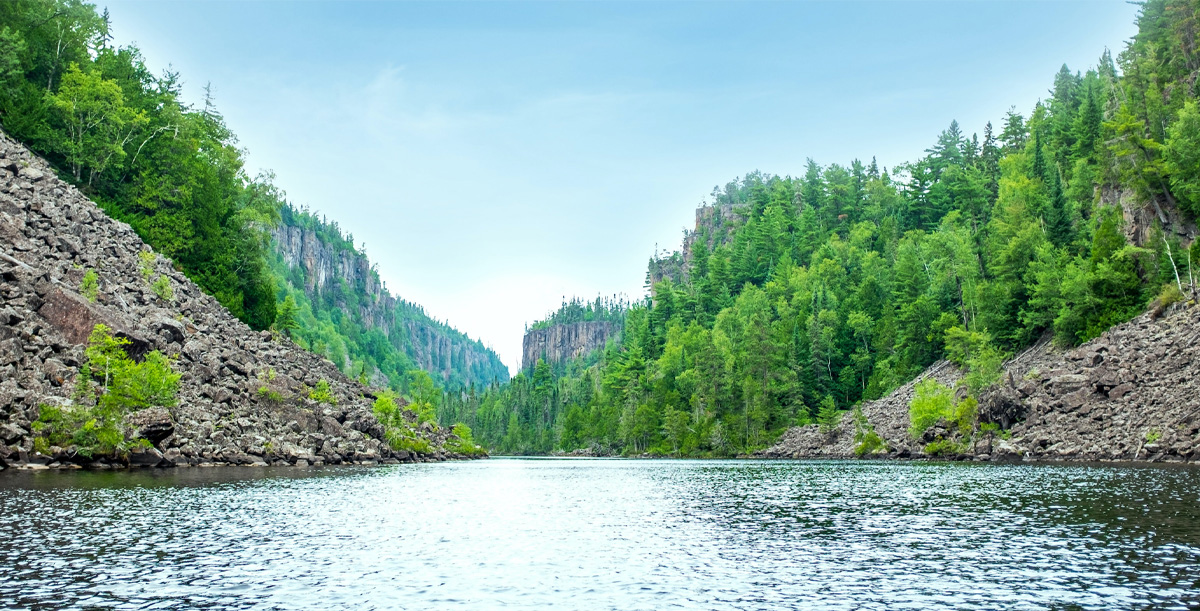
I get Math and English. History. Even Music. But teaching grade 8 Science needs a PhD. I’m scanning phrases like, ‘Water is critical to life’, ‘Water systems influence climate’, and ‘managed sustainably.’ Why don’t I have a cat to hug at times like this? I clearly need one. Maybe I should see my friends more. Or try dating. But who has time?
A sample issue jumps out at me:
(c) The Protocol for Safe Drinking Water in First Nations Communities addresses drinking water concerns. Various government agencies and interest groups have different perspectives.
Oh, I bet there are different perspectives, I think. Hah. I search for a Government of Canada link and choose: ‘Ending long-term drinking water advisories.’ Have to start somewhere.
After a few minutes, I glance back at the Science curriculum. ‘Watershed as a geographic unit’, ‘human and natural actions affecting the water table… lawn watering, extraction by bottled water industry, climate change, polar ice caps.’
I think, This stuff is big. Very big. I shudder.
How am I going to teach all this as a four-month substitute?
*
Sample issues: An oil tanker spills its load in B.C.’s inside coastal waters. A fuel truck jackknifes and is leaking gasoline onto a major highway, into local groundwater. A farm truck moving down a country road is leaking liquid fertiliser. The family car is leaking brake fluid…
*
Monday morning, early April, I admire two perky clumps of daffodils sprouting up through dead leaves in the school’s front garden. A flash of blue catches my eye to the right – is that a scilla blooming in the grass? I step onto wet brown grass and bend over, thrilled.
It’s a chunk of blue plastic. I pocket it.
Half an hour later, I walk the students upstairs, ask how they’re doing, how their weekend went. Suley bubbles about opening baseball tryouts for a boys’ rep team. I give her a thumbs up and try to engage Risa, always sleepy until about ten, then Mzenze, who shrugs but smiles happily. Mzenze seems to expect happiness daily. I love that. A group is arguing about the hockey game last night.
I open the class with a video of water scenes around the world set to music. (I made this last night.) Waterfalls; glaciers; beaches; surfing waves; rain, hurricanes; ships tipping over; a row of turtles napping on a log who slip off, one by one.
‘Writing Burst!’ I announce cheerily. ‘Write everything you know about water. And jot some questions you have. Have fun. Go!’
Laptops open, iPads, hardcover notebooks. Someone sharpens a pencil. Their choice. I join in, old school, in a notebook.
From there, I ask them to write something they know to be true about water on one chart paper, and questions on another. I scribe for Mzenze. She writes, ‘I love floating in water. I feel part of it.’
Gotta love that, right? I smile about it at recess, treading carefully through a giant puddle on the soccer field to rescue a hat. It’s great to see kids doing ballet moves with soccer balls, or tossing a small rubber ball against the wall and racing after it, a complex game I don’t understand. There’s another game on a 4-square painted on the paved section, shouts and laughter. Spring! Puddles everywhere. I’m grateful for my blue rubber boots.
*
The next day Tiel, a tall, friendly kid with big, bouncy hair, announces that water is all tied up in fossil fuels versus renewable energy.
He must be on a different brain track than mine. ‘I don’t quite get that,’ I say, to the relief of the other kids. ‘Could you walk us through it?’
‘I did a project last year, at my last school,’ he says, shrugging to make it not-a-big-deal, not-bragging. ‘I compared an oil furnace to using a heat pump. Like to heat a house.’ He rubs the outside of his thighs. ‘So, to mine oil, they have to use a lot of water, right? Then there’s tailings – the toxic garbage from like, say, the Alberta Tar Sands. Tailings, you know, get thrown into water. It poisons creeks and rivers downstream. And, like, who’s downstream? Indigenous folx. Of course.’
‘That is… brilliant,’ I say, feeling completely stupid. ‘Could you slow down just a bit? What a great project that was!’ I can hear how shrill my voice is.
‘If it’s natural gas, they might be using water to frack,’ Tiel continues, reddening as giggles break out. He coughs. ‘That’s when they pump hot water and chemicals into a drilled hole in the rock, to, like, push the gas out.’
My jaw is now on the floor. This kid is what, thirteen? ‘Right,’ I say. I write FRACKING FOR GAS, and invite him to draw a diagram on the board.
Tiel, with his happy afro and shy smile, has just clarified for me what no adults have. He draws all over the board, quickly, labels a few bits, and hurries to his seat. I give him a big thumbs up.
‘My dad says at least the oil from Alberta is ours. It’s Canadian,’ Abeel puts in. His jaw is lifted.
I’m half agreeing inside when Suley raises her hand. ‘But oil spills make this a water thing, right? Every oil spill ruins an ocean habitat and kills, like, trillions of creatures, right? Birds and amphibians and whales and…’ She trails off.
Tiel answers them both before I can even try. ‘You guys are right. But Alberta oil gets sent through pipelines across Indigenous land – and then loaded onto tankers. Then it’s shipped to other continents.’ He pauses and shrugs. ‘So it can spill in rivers, or oceans.’
At least I can find reputable news sites to help him out. I’m the paid teacher, right? I scrabble for some and shine them up on the screen: the Alberta Tar Sands: Before. After. (There are some gasps.) Oil spills from pipelines. Secwepemc protests. RCMP roughing up protesters. An orca whale pod at risk on the west coast due to tanker traffic. Photos of animals after a recent spill.
The class grows silent, thinking. I’m wondering if it’s legal to ask a student to teach the entire unit. I could pay Tiel on the side. Maybe he could wear pants instead of long shorts.
‘Okay,’ says Abeel, always a bit cheeky. ‘Okay, I get it. How, maybe, getting oil and gas, and transporting it, can, like, hurt water. Maybe. But what’s with heat pumps?’
Tiel starts to explain but we are all confused. Apparently, they are not 6000km wells to the centre of the planet to bring heat up to our homes. Huh. At his friends’ request, Tiel promises to bring in his old project tomorrow.
Incredible, I think, as the bell rings for lunch. Okay. We’ll just creep ahead, and see where these kids lead us. I will learn along with them. It’ll be fine. I take deep breaths and remember my mom’s advice when I got this job. You don’t have to know everything. Be modest. Be open. Be a learner, too. I kind of hope there are no more kid geniuses in the class. I’m going to be up all night, reading.
*
The next day Tiel convinces us all to install heat pumps.
Suley speaks for all of us. ‘So, these are amazing, right? But the thing is – where’re you gonna get the electricity from, right? Like, are we back to burning gas? Or oil?’
‘Niagara Falls!’ a voice in the back calls.
‘Wind farms on Wolfe Island!’
‘The solar farms by the highway. Right?’
They look at me. For once, I know something. (I was up past midnight, catching up to Tiel.) ‘Well, you’re all crazy smart,’ I begin. ‘It’s important we use renewable ways to make electricity, right? So, let’s check out where we Ontario folx get our electricity from.’
Bad news. This info is a bit old. ‘Fun fact!’ I declare. ‘Guess which province, in 2018, used water – hydroelectricity – as their main source of electricity?’
After some shouting and laughter, they guess Ontario or British Columbia. Understandable. We have Niagara Falls; B.C. has all those mountain rivers.
‘Wrong!’ I say. ‘Manitoba! 97%!’
We’re surprised. Sure, there are lakes in Manitoba, but it’s part of the Prairies, right? Next came Québec, then Newfoundland/Labrador, then the Yukon, then B.C. Who’d have thought? Huh.
I project Ontario’s sources of electricity up, from 2018:
Water – 23.9%. Wind – 8%. Solar – 2.3% Bioenergy – 0.5% Natural Gas –(there are a few boos) 6.2%. Nuclear – 58.3%
Several hands shoot up.
‘Nuclear? Like, can you really call that renewable?’
‘Nuclear?’
‘Nook-lee-ar? Or Nook-you-lar? How do even you say it?’
‘Isn’t that like an atom bomb? Waiting to explode?’
‘My cousins in Pickering say the fish glow at night in the bay.’
‘Is that true?’
‘What about the waste? Where do they put it? It’s scary stuff, right?’
I raise a hand, have to hold Gary’s gaze an extra two seconds, and gradually they settle down. ‘You are fantastic thinkers,’ I say. ‘I know some of this, but not all. How about we write our questions on this, er, growing chart of questions, and maybe, once we get into our inquiry projects, we can learn and teach each other?’ I pause. ‘You know, Tiel has convinced me, personally, that how we make electricity is actually a water issue. And that’s the focus of our next inquiry. Water issues!’ I sound like I need a white skirt, boots and pom poms. I tone it down, projecting a blue screen I can type on. ‘I’m looking for ideas we can explore. Water issues you’re interested in. No matter how silly it might seem, let’s throw it out there. Anyone?’
I wait. Nothing. Not even Tiel or Suley. ‘Well, think about how you use water at home. Any ideas from that?’
‘We have a well. Some guy bought three hundred acres beside us. He wants to build an apartment building! What if they empty our aquifer?’ Aquila has long dark braids and a very worried expression.
I jot this down quickly. ‘That’s a real concern, Aquila. Miigwetch. Thanks for sharing.’
Another hand rises, from Zavend. His hand shakes a little.
‘Yes?’
Zavend tries to speak, his Educational Assistant moving the mike closer, but I only catch one word – trees. Gary leans over to listen, then says, ‘Zavend’s talking about wetlands and trees. They clean up our water? And air? Is that right, Zavend?’
Zavend nods, then flips one leg over the other, crossing them with a snap, indicating he’s done.
‘Brilliant, Zavend. Wow. Wetlands and forests – equals cleaning water and air, eh? Zavend! That would be a cool thing to explore. How do they do it?’ I jot it down.
Several more hands shoot up.
Finally, I throw up the page from the Science document. ‘Here are some more ideas, in case anyone needs more.’ I have a volunteer read the examples, add them to our growing list.
‘Gym time!’ whispers Ella. She might have one paralysed arm, but gym is her forte. She never lets me miss it.
‘Okay, folx,’ I say. ‘Let’s push our chairs in and line up.’
‘How ’bout water polo today?’ suggest Gary, to laughs.
*
At 2pm, rainboots and jackets on, we troop over to the neighbouring farm’s gathering of trees, rocks and a tiny stream where we do Forest School on Tuesdays. I’m just following their regular teacher’s schedule, doing my best. Gary and Abeel take turns pushing Zavend’s wheelchair. We begin in a circle near the mother maple, and do some deep breathing. We go around to hear how folx are. Then I set the challenge. Today I hand out measuring tapes to pairs. They are to measure the diameter of the tree they partnered with last week, write it down, then try to predict the age of the tree, the diameter, the radius and the height. They are also to sketch the leaf buds carefully so we can observe changes each week.
It’s a happy time, and some are demanding formulae or to access the Internet on their phones to figure out a tree’s age. I encourage them to jot down ideas, to examine the number of branches, or ‘whorls’, maybe draw the bark at the bottom and farther up. Make educated guesses. We can explore this more tomorrow, or, if my guess is right, Tiel will just teach us.
Gary slips in the mud near his tree and goes down. When Abeel laughs, a good yank makes two students down. This age can be nearly adult, then kid-goofy. I call out and head over, with a friendly-firm ‘teacher-face’ pasted on.
*
The next two days I let the students explore the topics, in pairs, groups or alone, moving from one to another. I write each topic on a chart paper; they add questions and info bits as they explore. I wander, listen, ask questions, observe. By Thursday, a pouring-rain day, they’ve chosen their favourite three topics.
During quiet reading time, I start messing around with these choices. I want them to follow their passions, but could Tiel, Zoe and Ella work together on a topic? And what about Boil Water Advisories? Could Annie, who’s Mohawk and wants it, handle working with those two boisterous kids?
Maybe we need overt teaching about Cooperation and Group Work.
*
I post a tentative list of names with project ideas up after lunch. They rush into groups and start choosing team names. There’s laughter and head shaking. After a while, this is what we end up with:
Team Bottle: will research selling bottled water to large companies.
Team Hockey: will research how to get plastic out of our local streams and lakes.
Team Power: will try to design an irrigation system for home gardens.
Team Crazy: will play around with filtration devices, working with Team Hockey.
Team Rainbow: will choose the nearest place with a Boil Water Advisory and investigate.
Team Future: will investigate solar water heaters or floating solar farms. Unsure.
Team CleanWater: wants to try to solve the farm-chemicals-run-off problem.
Team Z: (Zavend) wants to explore how wetlands help clean up pollutants.
Holy cannoli, I think. I should send this list to the Prime Minister.
*
The following Monday the daffodils are open and the grass has turned a jolly green. I have a skip in my step. All students are engaged in inquiry projects and I am clearly a brilliant, capable young teacher. I fling open the door for the principal, who is wearing a navy pant suit, a yellow blouse and hijab. (Does it matter that I’m in dark jeans?) I use the awkward moment to ask her help with our research. I suspect that with eight challenging projects, we might need help finding decent websites.
Suley is still trying for the rep team, Abeel has started soccer, Tiel says he was hiking with his family on the weekend. I smile secretly, thinking of the hours I was reading articles, trying to keep ahead of him. I rub my eyes. Mzenze strokes my patchwork jacket, a thrift shop find. I meet Zavend and Lil, his EA, coming out of the elevator. I tell him that a friend emailed me that trees are being planted on polluted land, like dumps, to clean up the soil somehow. He opens his eyes wide.
‘On it!’ he says, and gives me a thumbs up.
I open the day with ‘Who knows Autumn Peltier?’ Happily, several have heard of her. They know she is Indigenous, though not what Nation, and a Water Protector. I’m impressed. I throw up an article and video about her on the screen, from when Autumn was twelve years old. She was supposed to set a copper water pot into the Prime Minister’s hands during a visit. Instead, she spoke up.
‘I’m very unhappy with the choices you’ve made,’ she almost whispers at him. Her voice is hoarse with emotion. She is trembling. Then, through a burst of tears, she says, ‘The pipeline—’.
WhiteGuy makes her a promise, and then, shortly afterward, buys a pipeline which Indigenous folx had protested against for years. Even the corporation had dropped it. This pipeline would increase the digging up of dirty oil in the tar sands. (I show a CBC article that reports this in a non-judgemental way, unlike the sarcastic voice playing in my head.)
The students are outraged. I hope I haven’t been too political here. It’s just a fact, right? What the federal government did, after promising to phase out fossil fuels.
‘How does this pipeline relate to Autumn?’ asks Aquila. ‘She’s from Ontario, right?’
‘Fair question,’ I return. ‘There is a connection between digging for oil or gas, building a pipeline across First Nation’s land and Autumn’s plea to the Prime Minister. Remember what Tiel taught us?’
I choose Case, who had raised their hand timidly. ‘Maybe Autumn is worried about oil spills in our lakes. Or rivers.’
‘And oceans,’ adds another.
‘Spills on Indigenous lands,’ adds Tiel.
‘Nice thinking. Probably all correct.’ I show a map of Canada onscreen, then zoom in slowly to show the Great Lakes. I ask my students what kind of pollution she might have been fighting at home, around Manitoulin Island and in the Great Lakes.
The students name plastic, garbage, oil spills. I add in the chemicals farmers use for large monoculture crops, pesticides and herbicides. I zoom in to show all the tiny rivers and creeks flowing into the Great Lakes past massive farms. We read an article about a man who is still raking Styrofoam peanuts off his beach on Lake Superior, years after a tanker spill.
Then I show a video of Autumn, at thirteen, talking to the United Nations. It’s short, powerful. She says that water is sacred, and alive, and talks about Boil Water Advisories on other Indigenous reserves. Water should have Personhood.
‘Writing Burst!’ I call and everyone grabs what they want to write with. Case wants bright blue paper to handwrite a letter to Autumn. Mzenze will only write a few words, I know, but that’s fine. She’s thinking hard, and will draw something related.
Like Case, I, too, write a thank you to Autumn, and hope that I can guide my class in a right way. Or they, me.
*
‘Mad Scientists at Work’
Day 1: Risa has made the above sign and stuck it on our door. I book more laptops for students to use for their research. Today they are to type/jot all the questions they have going into their project, map out the parts of the project they can predict so far, and list what supplies they might need. We begin the day with a lesson on How to Find Reputable (and safe) Websites and a review of our Safe Internet Policy. Annie, Suley, Aquila, Zoe and Abeel want to know when we’re doing a Science Fair to show off these Gonna-Be-Amazing projects. Because there’s going to be a Science Fair, right?
I hedge and say, I’ll ask the principal for a good date so, um, the whole school can have a look at your projects.
A Science Fair, I think. I hope that’s not extra work.
Day 2: Today is bedlam. I’ve invited the principal and a volunteer parent who’s tech savvy in to help groups. We three move around the room, helping them find websites. I’ve told everyone we are journalists on a fact-finding mission. Today we’re just circling around it, looking for general websites that seem trustworthy. Write those down for later. Hah. They are so distractable! Some are barely staying on topic. They open links within links, following their interests. I don’t blame them, but we have limited time to research. I’m exhausted, running from group to group. Deeply grateful for the other adults.
At Forest School today, it’s hard to push Zavend’s wheelchair through shallow mud and water, but Gary pushes so hard, there’s a siren of squeals from his classmates who get sprayed. I cover my smile. Lil takes over. The big find today is mushrooms, creeping up after all this rain. One group is in a fairy ring. This gives me a chance to introduce the mycorrhizal network underground, how they’re like the Internet for trees to communicate and send food gifts to each other. (Thank you, TED Talk videos.) Tomorrow, I’ll show crazy beautiful fungi to inspire a Writing Burst.
Is Tiel rolling his eyes at me or just looking at the sky? Did he already know all this? Maybe I should be teaching grade two.
Day 3: At the end of each day, we go around and share something. Sayeda, who has joined Team Z, is outraged at Nestle’s profits from Ontario water and wants to fashion a giant water bottle for the school foyer. Her waving hands are shaking as she tells us how the region couldn’t get rid of this corporation. I think about Nestle and child-slavery-chocolate. I ask if they believe the Canadian company that has taken over is better. I sure hope it is.
Team Crazy (filtration) and Team Power (irrigation) want netting, hoses, and open tubs to try things in. I email the wishlist home to each family and our staff. They’ve finished a bit of research and are working on diagrams for different ideas. I show a science fair project that filtrated salt out for drinking water, in case that is useful. Two veer off to read that.
Team Future is excited about solar panels floating on reservoirs in Florida, South Korea, China that help to protect that water from evaporating. The one in the Swiss Alps, they say, waving their hands, makes more electricity than any other! No one knows why!
I praise them, and ask them to include some photos or hand-drawn pictures, maybe a graph, to break up the text on the poster. It has to be in your own words, I remind them.
I pause the class and give a mini-lesson on taking jot notes, and the evils of plagiarism.
Zavend teaches us a new word: phytoremediation. Apparently trees and wetlands have superpowers when grown on toxic land. I think of many city councils, who encourage tall concrete buildings and are happy to ‘develop’ over urban woodlands and wetlands. Zavend, with assistance, tells the class that 75% of Ontario’s wetlands have been destroyed. I’m aghast.
Day 4: Troubles break out in Teams Power and Rainbow over one person hogging a laptop or being bossy, others feeling left out. I stop the class and talk about the importance of listening to and encouraging the quieter people. Everyone participating. Every voice counts. I also sympathise. Group projects can be very difficult. Everyone needs a role. I suggest they take a few minutes to discuss, then to write down what they, personally, are expected to do in their group project, and turn it in. To me.
The principal informs me there are always some teachers who won’t be happy that I’m booking the gym for an entire day. Even for a Science Fair. I might want to send a friendly email to them, apologising, far ahead of time.
Day 5: I open with a giant list onscreen of the expectations I will be marking for ‘Cooperation’ and give an eyebrow raise to certain people. Zavend is watching videos about Miyawaki somebody. Mzenze is quietly crying.
After some time listening to her, I think I understand. I lead Mzenze around to each group. Each group makes a mini-presentation to her about what they’re doing. She’s working at about a grade two level academically, but often surprises me. After this, she decides to do an illustration for each group, instead of working on just one.
Mzenze might end up with a broader sense of these issues than anyone.
At Forest School, the leaf buds seem bigger. They make sketches, and compare poplar to maple to oak buds. Fascinating differences! There is one young tree with a large purple buds. We’re so curious! Mzenze is beside herself with the glory of small pink buds on a lone crooked tree at the far end. What is it?
Day 6: I suggest Team Power do a history of irrigation techniques and start with Mesopotamia. This is merely a ploy to slow them down. We have an old hose from our grade three teacher and I brought in a torn cotton pillow case and ancient towel to try to filter with. The principal arrived with a large plastic tub to experiment in. I send another note to homes, marked ‘urgent’.
Mzenze needs extra help. Needs me to explain again the first project she wants to draw, selling our water to a multinational corporation. For profit. She keeps saying, ‘If people are thirsty, we share our water, right?’
I have no answer to that.
Day 7: Team Rainbow has been too quiet. I should have known. They are supposed to be looking for a Boil Water Advisory closest to here, but have been reading and signing petitions across Canada. They are seething with facts. ‘Did you know,’ Annie demands, ‘that there were like, 150 Indigenous communities with polluted and toxic water in Canada? Right up till last year! Some still have to wait for a truck to drive in with a lot of bottled water’ – Team Z leans over – ‘just to have a drink? Just to wash a baby’s poopy bum? Like, they can’t even take a shower! The water is gross coming out of their taps!’
Risa adds, ‘And this went on for longer than my whole life. For like twenty-five years!’
‘This is racist,’ declares Annie, then checks with me. ‘Isn’t it?’
I nod and shake my head gravely, obviously a mixed signal. ‘I agree, Annie,’ I clarify. I take a deep breath. ‘Water should be free for everyone.’ Then I become the teacher who has to write report cards. ‘Could you folx pick one, here in Ontario? And investigate that case?’
Risa nods. ‘People need to know.’
Day 8: At 8am, I lean forward to peer in the mirror as I insert a shepherd’s hook wire through my pierced ear. Without conscious thought, my fingers have picked up dangling sand dollars, pewter. I remember a trip, long ago, to Prince Edward Island.
‘Look, Mom, look!’
Mom turns from the surf to step quickly across the rocky beach toward me.
‘Look at the picture in it, Mom. Is it alive? Is it a plant or an animal?’
I’m holding a flattish pink disc with an imprint of flower petals on one side. ‘Is it a rock? Or a shell?’ I ask. ‘But a shell means it’s an animal, right? But it looks like the pinky sand.’ I wipe some off my arms.
‘I don’t know, honey,’ says Mom, taking me seriously. ‘Turn it over.’
It’s flatter, with five lines in a star shape, on the other side. There is a tiny hole in the centre.
‘Listen to it. Is something breathing in there?’
I hold it to my ear, hold my breath. Nothing.’ I hand it to Mom. ‘I can’t hear anything. Maybe it’s dead.’
Dead. I pause and splash free, clean water on my face. The sand dollar had, indeed, been dead. I think of ‘Boil Water Advisories’: thirty-four Indigenous communities still have water unfit to drink across Canada. Dead water. Or rife with bacteria or toxic chemicals. Dead.
I shake myself and step into the kitchenette to make coffee, lunch, and get to school. I’m arriving earlier each day, up later each night, and still can’t get it all done.
Day 9: Team CleanWater wants to give up. They’ve read scary things about the pesticides and herbicides sprayed on large crops around here. Abeel lives on a dairy farm but they buy corn and soy food from large farms, to feed their cows and many chickens. They grow hay too, and apparently his research has turned into a big argument at home over the dinner table. That would explain the message to call his father and the note from the principal to see her after school.
Just great.
Ella lives beside a creek. Across the creek a farmer sprays the large soy field various times throughout the season. She is freaking out. I’m not sure how to handle this, frankly.
I sit down with her group and we look up the rules for spraying one common spray: glyphosyte, Roundup. It seems that the company suggests no spraying on windy days.
‘Duh,’ comments Abeel.
We dig a bit further. Unfortunately, we are on three laptops. While I’m reading aloud ‘Glyphosate in Canada: Canada.ca’, pausing to get the Health Canada’s Online MRL (Maximum Residue Limits) Database to work, and the kids are nodding at me as though riveted, Abeel is secretly reading ‘Sign Petition to Ban Glyphosate – Greenpeace’. He has signed the petition and pinged it to everyone in the class. My site has a calm and soothing tone and I’m thinking smugly: Crisis, Averted.
Then Zoe interrupts me with an innocent question. ‘What does ‘class action’ mean?’
I lean over to read what is on their screen: ‘Glyphosate Caused Cancer – Class Action Lawsuit.’
I foresee a long time talking to the principal after school.
Day 10: I need a serious drink. A day off, hiding under my covers with a comic book. How can I stop a tide? These students are a force of nature.
Instead, I’m drinking excellent water from our special school fountain made for refillable water bottles. Our school is just north of a major east-west highway, not on the city’s sewer system. We have a large septic tank under a grassy field beside the school, fenced off. Sometimes it reeks and we close the windows. Sometimes, I see a large steel tanker truck arrive on the other side with water to fill up our storage tanks for drinking. Where is our perfect water actually coming from?
Today Team Rainbow has finally settled on the town of Grassy Narrows, Ontario, and they ask me to share a little video they chose with the class for a class discussion. It’s exciting, really, when your students really get into their work and want to share it with everyone, isn’t it? Right?
After the video I think, oh, shit.
*
It is sunny for Forest School today, with dry places to sit and only a trickle of water curling through the grove. We bring pencils, oil pastels, and cheap paper clipped to heavy cardboard. I’ve asked them to draw a few different tree buds as they look today and then settle down in one spot to daydream or play with art. We need beauty again.
Mzenze hurries back to tell me the crooked tree’s buds are now vivid pink. What the heck is that tree?
I spend that night listening to an angry parent. I forget to eat supper, and it makes me as angry as Annie and Suley, after watching that video in class, and later, others at home. Our sweet little government allowed a pulp and paper mill to set up shop beside the river which gave drinking water and fish to the people of Grassy Narrows. They dumped their waste into the river, 1962–1970. It was full of mercury. People in Grassy Narrows started to shake, grew ill with cancer from mercury, died. The graveyard grew. 90% of the folx there today have mercury poisoning. Finally, finally, the water treatment facilities have been upgraded, but they’re still waiting for a hospital. A hospital, to treat all survivors with mercury poisoning.
I sign a few petitions, including the one Zavend sent around to save local wetlands and restore others. I make three donations. Sleep poorly.
*
Day 13: Today we take a day off research. It’s Friday but we need the forest again. I do. Our Learning Goal is ‘Healing and Sharing’.
Once we are beside the mother tree, I notice that, in the distance, the whole grove looks slightly fuzzy with yellow-green. Huh. I tell the students that I, at least, am beginning to feel overwhelmed by these amazing inquiry projects. Emotionally overwhelmed. Does anyone feel the same way? Does anyone want to share how they’re feeling?
No one wants to share but Tiel asks a question.
‘We’re gonna present our projects at a Science Fair to the school, right? Can we do it in the evening, like, to parents and the mayor and, you know, important people? Who should learn this stuff?’
‘Great idea,’ I reply. ‘But would you all stay after school to show our projects to the community?’ I ask doubtfully.
Everyone cheers. Every single one.
‘Okay, then tell your parents tonight, and I’ll draft up an email. Mid-week is usually better for adults. How about a Wednesday night? About two weeks?’
‘I have soccer!’ says Abeel.
‘Swimming!’
I try Thursday, then Tuesday. Tuesday seems the best day. I’d better change the day I booked the gym, send new apology emails around. I’ll talk to the principal. Again. There’s a special form to book the gym after school. Sigh. I force a smile and ask them each to tell us one thing they’ve learned so far from this Science Inquiry Project.
They go around the circle: Grassy Narrows, the Tar Sands, glyphosate spraying. The city wanting to clearcut urban forests, and build on wetlands. It’s all a bummer. I break out a bag of shoestring licorice and circle around, offering each student red or green.
‘Let’s look for something good,’ I say. ‘I’ve read that willow and pine trees give off aerosols that make us healthier. Even happier. They’re like vitamins you can breathe in. So today, find something good.’ I pause. ‘In about ten minutes we’ll get settled in a spot to rest, and just relax. Off you go now.’
Mzenze races straight down the main path. She’s heading to the crooked tree.
I smile. Abeel is helping Lil with the wheelchair, but when they reach the path, Zavend opts to walk, arms supported on each side. He wants to sit by the rivulet. Lil, I see, has brought two foam chair pads inside plastic bags for them. Wise woman.
I linger a few seconds, watching the students split up in twos or threes, take different paths. Some stop at the pussy willow by the fence. They feel the fuzzy catkins. Others bend over to see if any new mushrooms have appeared. Zoe shouts that leaves are out. Baby leaves! There are squeals and shouts. I shake my head, try to clear it, smiling at them. Idly, I tie my green licorice into knots, and chew the first one. Then I follow my kids.
*
On Monday it snows. Yep, it’s May. I have spent the weekend sending out email invitations. Feels like a hundred: to the school board director, trustees, city councillors, local business owners, our MPP, our MP, our kids’ families, and everyone I could think of. The principal has posted it on the school e-newsletter and twitter, and I tried to get it in the local paper but was too late. We used Risa’s title, ‘Mad Scientists’ Fair’, and it will be from 3.45–6pm. I get an iPad out and start snapping photos of the students at work. That part is fun. They ham it up for photos. I decide to take photos daily and create a brief slide show.
*
Day 16: Zavend’s mother has emailed me with an idea from her son. Why don’t we, as a class, plant a tiny forest in a corner of the schoolyard? What a sweet idea! She sends me links about Akiro Miyawaki and tiny forests. Who?
*
Day 18: I tell the principal I’d like to make a short presentation to the Parent Council at the next meeting. It happens to be the day after our science fair. If that’s okay, I say. Zavend wants to speak about the work the grade 8 students have been doing. Such a big step for him, right? His mom is so proud of him. (My fingers are crossed behind my back.) The principal is delighted and puts us on the agenda. I email Zavend’s mother, ‘We’re on!’
*
Day 20: Today is finally the day: The Mad Scientists’ Fair. I was up half the night curating and editing photos for the slide show. I arrive an hour early in new navy pants, crisp from the store. A white shirt. I basically stink at fashion and don’t see why women should dress much differently from men. Neat and clean, that’s my goal. Hair washed.
Every student has permission to stay after school from 3.30–6, barring a few early pick-ups. (I had to answer nearly a dozen parent emails!) I’m just praying people will come. Anyone. I re-sent twenty invitations.
At 3pm, as the last class, grade seven, is touring through, I step back to take more photos. Mzenze’s mural is fantastical, otherworldly, like a painted poem. It is three metres long, with water running through each symbolised project. She has white curls for waterfalls, birds sweeping low over tall grasses in a marsh for Zavend, hundreds of bees hovering over an organic field. We hung this across the gym’s side wall and surrounded it with gold stars, hand sized. (I’d cut those out at home.) For Anna and Risa, she has a child drinking from the stream. At the front of the room, the slide show of the students and projects has been playing quietly on a giant screen all day. Grades one to seven had come through, but I’d coached my students about how to present to younger kids: Keep it simple. Stress the positive.
Zavend, with some help from his excellent mother to create a poster, has a petition that every child in the school has signed today. To let us ‘plant a Tiny Forest’ in the schoolyard beside the smelly septic tank area and the pavement. He says it will clean up the smell and the ground, and help with storms and heat zones. He won them with the words, ‘more birds.’ The principal gave me a very long look after reading it. I gave her my brightest, most innocent smile.
The grade sevens give a round of applause before leaving. It’s time for the rest of the school to pack up now and get on buses home. I allow my class a ten-minute break to walk the halls, use the washrooms. It’s been a long day. Already.
Will anyone from the community come?
By 3.50, a handful of school families arrive. Then, the minister of the local United Church arrives with the secretary of the Islamic Centre, having carpooled together. One of our trustees shows at 4pm. At 4.15, a lone school superintendent. Another few parents trickle in. Two of my personal friends come, as huge favours to me. I’m so pleased, but can barely speak to them. I promise to do something with them this weekend, a hike, or a dinner. The Director of Education and our School Superintendent only send regrets. Grr.
There is a terrible gap with no visitors for fifteen minutes, and I, while panicking, cut up apples and offer them around with fruit juice gummies. Then I send the students off to use the washrooms again. I put on some relaxing music. For me.
More parents arrive by 5.15 and make noises about taking their students home. Young siblings race wildly around the gym, threatening projectors and tables. After looking at their own student’s project, most parents stand about in groups chatting. I try to direct them, ever so gently, to the other wonderful projects. My smile is frozen and feels stretched.
At 5.20 a single City Councillor arrives. Then a rabbi with her own children. At 5.35 our Member of Provincial Parliament drops in, says he only has five minutes. At 5.45 he is only halfway through the projects and I suggest to the impatient parents to go have a look around our classroom! See their beautiful artwork! I assure them we’ll pack up at 6, as planned.
At 5.50 the Mayor actually arrives with a photographer from the larger newspaper. Only half the students are left, but they straighten up, smile for photos, eagerly explain projects. Mzenze demonstrates the filtration system, a variety of fine nets to be attached to every sewer pipe before it empties into Lake Ontario. Such a simple idea to catch microplastic. So smart, and done in Australia. The Mayor seems interested.
I make certain the Mayor spends a few minutes at Zavend’s table. Mzenze fills in there as well.
By 6.30pm, the last family finally leaves. Cathy, the custodian, a terrific human being, helps me to load all the laptops and tech on two carts and get them locked safely in the classroom.
I fall into bed by 7.30pm. Zombie dead.
*
The next morning, dragging my corpse past the school garden, I notice clusters of tall red tulips. Were they there yesterday? In front of the staff room are a bunch of fat purply-green balls on spikes. Where did these come from? What are they?
At 9.05, I trudge beside the kids upstairs, nodding and smiling hello, trying to dredge up energy to ask how it’s going. Suley has heard she made the boys’ rep team. I high five her. Everyone is bubbly and jolly, high from the Fair. Only their teacher feels like a flattened can of pop on the road.
A photo of Annie and Risa, standing in front of their poster of the cemetery at Grassy Narrows, has made the local online newspaper with the headline: ‘Why Boil Water Advisories, Anyway?’-Deep Water Projects by Local Grade 8s.’
One of the dads drops off timbits for the class. Maybe small doughnuts aren’t the healthiest, but I appreciate this. I call the corner store and order pizzas. We watch our own slide show, read the two news articles about the science fair. We write reflections and gratitude pieces, then do some zany art involving real animals and invent-your-own-skin/fur design. I play the gorgeous song, ‘Home to Me,’ sung by high school students, N’we Jinan Artists, from Grassy Narrows, with the video a few times. Then I switch to soft jazz, for me.
Don’t we all deserve a week off now? Seriously? Just to sleep?
I write about ten thank you emails to staff, my friends, and the two journalists whom I had invited rather late, at a friend’s suggestion. Then we head out to the woods to meditate and let all that learning just… settle.
The trees are a deeper green, the leaves larger now. The kids are energetic, striding to their own trees, checking different leaves, laughing. Suddenly there’s a scream from Mzenze. I run with everyone else.
The wild apple tree (I’m 99% sure that’s what it is), is covered in hand-sized flowers. White! White! Everyone claps and laughs. It is as though the tree has played a trick on us.
Then Annie shows us all a cool trick over at one of the few spruce trees. Two spruces are covered in tiny soft red cones.
‘Look everybody!’ she says, and squeezes one cone. It shoots out a fine yellow powder that makes her sneeze.
‘Cool!’ shouts Gary, lunging forward.
Everyone has to squeeze one, sneezing and marvelling. Tiel is explaining something about male spruce pollen and wind dispersal; kids are laughing and Gary gets him in a playful headlock to shut him up.
I really ought to pay that kid, I think, through my own helpless chuckles.
I cannot believe it is all over. Time has actually moved along. We really did it. Or, er, they did it. I roll my shoulders to loosen up some tight areas and wonder what month it is. Surely it’s the end of June already? Nope. Not quite mid-May.
I let them relax, chat and wander for half an hour. It’s heaven, this grove of trees. When I see the first school bus arrive early, I gather my rascals back to make our circle by the mother maple. I’m feeling a little smug about all of this. Mentoring these projects was exhausting, to be sure, but it turned out fairly well. I might treat myself to a bottle of wine tonight— No, Parent Council. Okay, tomorrow. Hang out with friends this weekend. You know, have a life – outside of teaching.
Mzenze raises her hand.
‘Yes?’ I ask, turning to her, smiling. Mzenze is such a great kid.
‘Can we bring our projects to other schools?’ she asks, full of goodwill. ‘To teach other kids?’
‘What?’
‘Great idea, Mzenze!’ shouts Abeel. ‘We should, like, go on the road! Take our Fair to other schools, right?’
Everyone cheers.
My smile freezes. It would mean hours of red tape, emails, letters, permission, buses, money collecting, forms, coaxing volunteers, and timing. Hours of extra work. I settle them down and say, honestly, it would be a lot of work. I need the weekend to think it over.
Abeel, Suley, Risa, and Aquila are clapping loudly at the idea. Tiel is high-fiving Gary and Case.
‘Okay. Chill, folx. I’ll think it over,’ I say. I can feel myself giving in. ‘Er, does anyone have anything else to share?’
Tiel waves. ‘I think Zavend’s Tiny Forest idea is super cool.’ Everyone nods vigorously. ‘I can’t wait to start digging. A bunch of different kinds of shrubs and trees, right? All local?’
Zavend claps his hands and raises two thumbs up, happily.
There are grins around the circle.
I add, ‘Zavend and I are talking to Parent Council tonight, and asking for funds to order a diverse mix of tiny trees and shrubs. And for the mycorrhizal powder. We’ll get compost and wood chips from the city. We’ll have to prep the area right away, all of us, but it’s better to plant the trees in the fall.’ I smile at Zavend. ‘The question is, would you all come back mid-October to plant the trees? You’ll be in high school then, busy! I don’t know where I’ll be teaching, but I’ll come.’
Everyone nods vigorously, surprising me. Zavend’s mother actually suggested that, if need be, we could ask for local baby trees from the whole school community. Often trees pop up in gardens or septic beds, unwanted.
Zoe raises a hand.
I nod, tensing up. I’m afraid it will be another big project idea.
‘I feel different now, you know?’ She holds up her water bottle. ‘When I take a drink of water, now. Like – respect. Total respect.’
I exhale and nod with the others, getting it.
‘I think I get Autumn Peltier now,’ adds Abeel. ‘Water is like, well, kinda sacred.’
I close my eyes.
Hell, yeah, I think, just as the bell rings.
For more short stories, subscribe to our weekly newsletter.

